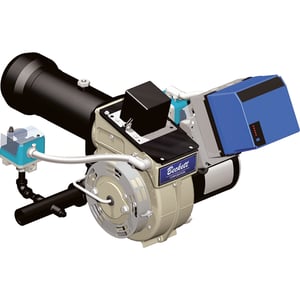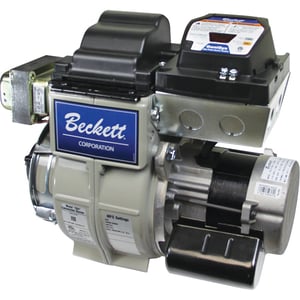Over the years and decades, heating systems, home design, and other appliances and technologies have developed alongside our changing needs and lifestyles. For heating systems and appliances that use gas, the gas burners inside have also gone through a series of design and engineering changes. Several iterations of the gas burner have replaced older technologies, all in favor of safer and more efficient gas heat. In this post, we'll discuss the evolution of gas burners through the history of gas heat and the benefits these developments brought to the industry and its consumers.
The Evolution of Gas Burner Technology
As gas-powered appliance heat exchangers got tighter in design for higher efficiency, engineers were tasked with creating gas burners that refined how the right type of flame is produced for the appliance heat exchanger. The first example of a large change in gas burner technology involves changes made to the inshot burner. In the new design, many small flames are produced in order to distribute heat evenly across the application. However, as heating systems were still evolving, so did the demands of the heat exchanger.
In a tighter heat exchanger design, "spent gas" byproducts could not move freely, and engineering changes were needed in order to make these gases flow through the exchanger to the chimney connector. As a solution, industry engineers developed and implemented draft inducers into the gas heating system. When installed on the exhaust, draft inducers draw gases through the heat exchanger, allowing passages to capture heat as they restrict flow, without a negative effect on the flame shape or character on a ribbon burner.
On the other side of the industry, power gas burners were developed with fans that pushed gas through the head that regulated the mixture of air and gas. In this case, the ignition cycle generates a more robust flame that fills the fire box area. This development provided several innovative benefits to the industry. First, power burners could be used on larger commercial applications, industrial furnaces, and boilers. As the power burner evolved, it could provide an easy way to consumers to convert from coal to gas heat. Instead of using a row of ribbon inshot burners, power burners fire through the door like an oil burner, making it easy to convert from oil to gas as well.
 |
 |
| Click here to learn more about the CG4 Residential Gas Burner and other burners from Beckett. | Click here to learn more about the CG10 Commercial Gas Burner and other burners from Beckett. |
More Efficient Gas Heat with Pre-Mix Burners
When it comes to water heaters, the industry began moving away from the sunflower petal-shaped flames of the past in favor of a design that often used a draft inducer as well as a pre-mix burner. The pre-mix gas burner is designed in a mantle shape. As gas enters the mantle and mixes with air, it lights the outside with energy. The biggest benefit of pre-mix burners is that these burners can be applied to high efficiency applications that use a draft inducer. If a variable speed motor is installed, the burner input can be modulated for an energy source that closely meets the demand of the application. The closer the energy source is moderated to the BTU demand of the load, the more efficiently the system operates.
As these opportunities developed, the pre-mix burner opened up a new field of condensing applications that also contributed to higher efficiency heating. Condensing appliances brought efficiency ratings to a level that wasn't attainable before. The concept makes sense, though application requires an additional heat exchanger. During the combustion cycle, spent gases are expelled as a vapor. The vapors are made up of hydrocarbons, which contain both hydrogen and oxygen. Efficiency increases based on how long the gases contact the heat exchanger. However, a balance must be found to ensure safe operation. This balance is in the form of a secondary heat exchanger.
As the spent gases move through a secondary heat exchanger, the design forces condensation. Hydrogen and oxygen form water vapor during the combustion cycle, which is typically exhausted through the chimney. Condensation releases the latent energy contained within the water vapor, and this energy is then captured or transferred by the secondary heat exchanger. The process converts what was once wasted into usable energy through a phase change — in this case, condensation. In a condensing appliance, condensation happens within the specifically designed secondary heat exchanger of these appliances, many of which use a pre-mix burner system to start the cycle.
The reason and concept is simple; the appliance now retrieves the energy that was expended to form water vapor. Using modulating pre-mix burners, combined with this special heat exchanger allows us to closely match the heating demand, or load. We are reclaiming some of the BTUs that would typically be lost in combustion, resulting in the improved heating efficiency now found in modern, condensing systems.


